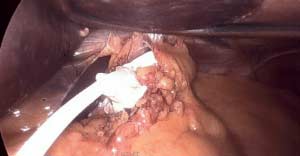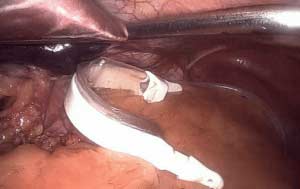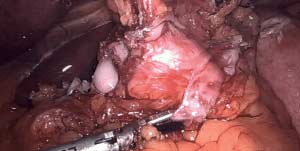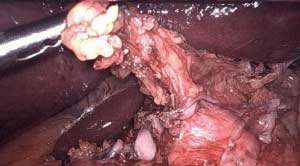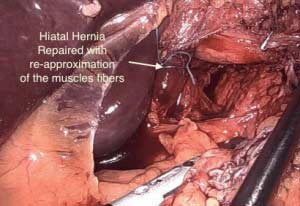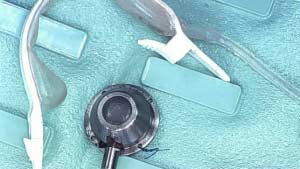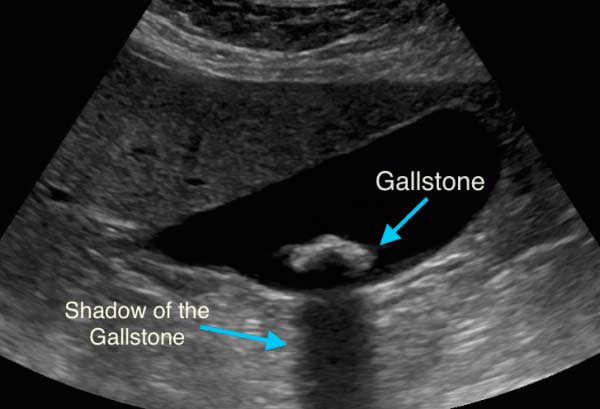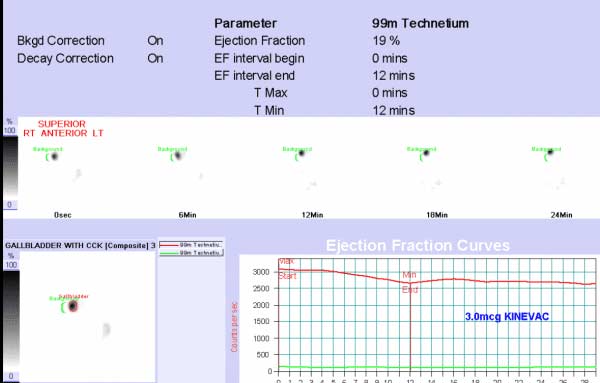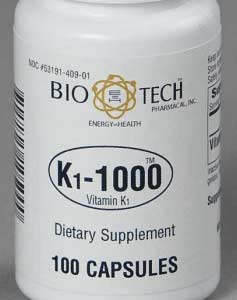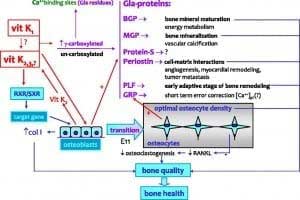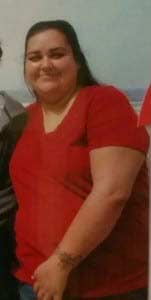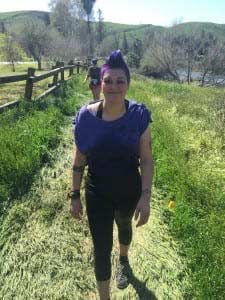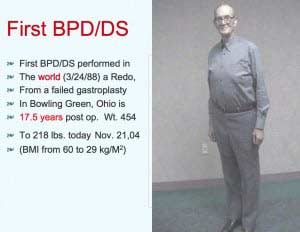Adjustable Gastric Band Removal & Hiatal Hernia Repair
April 21, 2015 6:30 pm
The band in place and after being taken down
The dissection of the wrap over the band that shows erosion
Feeding TubeExclusive Member Content
April 20, 2015 11:43 am
Zinc InformationExclusive Member Content
April 17, 2015 7:22 am
Copper InformationExclusive Member Content
April 17, 2015 7:21 am
Shared Success Story- Dr. D. Brown
April 13, 2015 11:38 am
I had Roux-en-Y (RNY) gastric bypass surgery in February 2004. I was told it was the “Gold Standard” procedure and it was the only one my insurance would approve (according to the surgeon’s office). I lost around 130 pounds with some minor bounce back. Kept it off for 7 years. I had so much energy; I decided to go back to school to become a doctor.
In medical school I really began to regain, for a total of 75 pounds over 5 years. I tracked food and found that if I ate more than 1300-1400 calories daily, I was gaining. I had absolutely no sugar dumping or satiety or restrictive effects left from the RNY Gastric Bypass, only my metabolism’s memory of starvation mode.
In fact, I never had one incident of dumping syndrome; I only felt satiety for the first 2 years and was able to eat well over 2 cups of food per meal by year 7. Lack of dedicated exercise, extreme stress (time, financial & academic) as well as poor food choices all contributed to my regain. However, the RNY Gastric Bypass surgery only has an average long-term excess weight loss of around 50%, so that still makes my weight regain close to the acceptable range.
Finally, I looked into revision surgery. Not only is surgery always a major decision, but also a revision to a DS is a very technically complicated surgery. I extensively researched all the options to make the right decision. The Duodenal Switch surgery has the best long-term statistics for maintained weight loss in all the medical studies (close to 75% excess weight). The major feature is nutrient malabsorption. The amount is dependent on an individual basis but most fat and some protein calories are not absorbed. There is an initial restrictive component as well. With the nutrient malabsorption also comes vitamin/mineral malabsorption. However, RNY also causes vitamin malabsorption and I was already taking vitamins, so what’s a few more? I am just 4 weeks post-op now and am still in trial-&-error mode, but I have found a safe plan for returning back to work. I really could not have afforded any complications and am so glad that I placed my trust in Dr. Keshishian.
Dr. D. Brown
Starting wt: 274.0
Vitals for 4-16-15 (4 weeks post DS)
wt = 249.0
T = 97.7
P = 88
BP = 108/80
Evaluations of Gallbladder Disease And Function
April 11, 2015 7:03 am
Gallbladder disease can include both anatomical and functional condition. We are familiar with gallstones. Bile acids, Lecithin (a phospholipid), and cholesterol are present in the Bile. When the proportional percentage of each one of them is outside a very narrow range, gallstones are formed. Approximately 75% of the gallstones are formed because of the supersaturation of the content of the gallbladder with cholesterol which results in cholesterol stone formation. The rest are pigmented stones.
Gallstones are usually identified by ultrasound and they are seen as shadows.
There are patients that have a normal gallbladder ultrasound result that continue to have signs and symptoms of gallbladder disease, such as abdominal pain in the right upper quadrant, nausea and vomiting with fatty meals, and bloating to name a few. These patients should be evaluated by a dynamic HIDA scan.
A dynamic HIDA scan study evaluates the function of the gallbladder, by creating a movie of the gallbladder, where as an ultrasound takes pictures of the gallbladder.
In a dynamic HIDA scan, and contractility of the gallbladder is reported in form of ejection fraction (%EF). This represent the amount of gallbladder contraction in response to the stimulation by a fatty meal mediated thru cholecystokinin (CCK). A normal EF is greater that 35%. Anything less than than with the sign and symptoms of gallstones, should be highly suspect for acalculous cholecystitis. Calculus because there is no stone.
(The bright white collection represents the filling of the gallbladder)
This short movie represents the uptake of the radio nuclear material in the gallbladder and its normal secretion in the small bowel.
These are the static images before the injection of CCK.
Following the injection, digital subsection of the images measure the amount of nuclear activity of the gallbladder before and after contraction and an Ejection Fraction is calculated.
Vitamin K1
April 08, 2015 7:16 pm
Vitamin K1 is a found in dark green leafy vegetables, asparagus, brussels sprouts, some grains, olive oil, prunes, soy bean oil, and canola oil. The body has limited storage capacity for Vitamin K and uses a recycle system to reuse it.
Vitamin K1 is a fat-soluble vitamin that after Duodenal Switch is not as easily absorbed due to the limiting contact of the food product with the bile until the common channel. Bile is needed to absorb fatty acids and fat-soluble vitamins.
Duodenal Switch patients in need of Vitamin K1 supplements should take “Dry” or water miscible type of Vitamin K1, such as Biotech brand. The patients laboratory studies will determine if a patient requires Vitamin K1 supplement. Duodenal Switch patients should have laboratory studies drawn and evaluated at least on a yearly basis. Vitamin K works in a delicate balance with other supplements and should be monitored by a physician, in at risk people.
Vitamin K1 is most know for it’s coagulation effect and the clotting cascade. Vitamin K1 works with calcium and proteins in order to accomplish coagulation synethesis. Care should be taken with Vitamin K supplementation and anti-coagulation (blood thinners) therapy. Please see your physician regarding any supplementation of Vitamin K and blood thinner medications.
A discovery of Vitamin K dependent proteins has led to research on Vitamin K1 in bone health. Bone matrix proteins, specifically osteocalcin, undergo gamma carboxylation with calcium much the way coagulation factors do; this process also requires Vitamin K. Osteocalcin is a Gla-protein that is regulated by Vitamin D. The calcium binding ability of osteocalcin requires several Vitamin K carboxylations to exert it’s effects on bone mineralization.
In adults, the causes of Vitamin K1 deficiency include the following :
Chronic illness
Malnutrition
Alcoholism
Multiple abdominal surgeries
Long-term parenteral nutrition
Malabsorption
Cholestatic disease
Parenchymal liver disease
Cystic fibrosis
Inflammatory bowel disease
Medications: Antibiotics (cephalosporin), cholestyramines, warfarin, salicylates, anticonvulsants, Cefamandole, cefoperazone, salicylates, hydantoins, rifampin, isoniazid, barbiturates, and certain sulfa drugs, higher Vitamin E can antagonized Vitamin K)
Massive transfusion
Disseminated intravascular coagulation (DIC) – Severe
Chronic kidney disease/hemodialysis
Additional information: https://lpi.oregonstate.edu/infocenter/vitamins/vitaminK/
Intake of Vitamin K1 and K2 and bone fracture risk
As always, discuss with your physicians and/or surgeon any changes in medications and supplements. This is not meant to be an all inclusive discussion of Vitamin K.
Shared Success Story- Odessa D.
April 07, 2015 10:20 am
My name is Odessa D. I am going to talk about my weight loss journey with the lap band which started in 2006. At my heaviest I weighed 270 pounds and was a size 24 waist. I had high blood pressure, was a border line diabetic, had lower back pain, I had no energy, I was tired all the time, and I had sleep apnea.
My family doctor had suggested weight loss surgery but I was hesitant because I was afraid of surgery. Until one night my 8 year old daughter found me not breathing in my sleep. I made the decision to go through with the surgery.
Prior to surgery I did as much research as I could about the lap band. At the time I felt it was the right decision. On the day of the surgery everything went well. The first few months were great. I was losing weight, feeling good, feeling happy, and healthier then I have in years.
Then it began, all the symptoms of a slipped band. I started vomiting, nausea, acid reflux, and I was having trouble drinking and eating on a daily basis. My doctor confirmed it was a slipped band. We decided to replace the band because I was still overweight. On day of surgery I weighed 210 lbs.
After a month I started having symptoms of a slipped band. My doctor performed x-rays but everything looked fine. After 2 years with these symptoms and numerous doctor visits and x-rays I just gave up and learned to live with it. In 2 years I lost 4 lbs. My high blood pressure and sleep apnea came back. I finally decided to get the lap band removed. I wanted my life back and if that meant gaining the weight back that I lost then I was willing to make that sacrifice.
Dr. Keshishian was referred to me by 2 of his past patients. From the moment I walked into his office I was already at ease. When I first met Dr. Keshishian, I knew I was in good hands and I knew he could help me. He confirmed I had another slipped band and a detached port. At this point we discussed removing the lap band and switching to the Sleeve Gastrectomy. Finally everything was going to be fixed and everything was going to be right.
I can’t express how much my life has improved since removing the second band and switching to the sleeve. I have lost 46 pounds in 9 months. I now weigh 160 pounds and wear a size 8 waist. Now I look forward to each and every day with joy and pleasure knowing I don’t have to deal with a bad band and all the horrible symptoms that came with it.
Since the surgery and losing more weight I have been very active. I go hiking almost every weekend. I have literally climbed a mountain! I did my first 5k mud obstacle course in which my second 5k is in October. I even have a purple Mohawk! I have 100% confidence in myself and in everything that I do. My life has greatly improved since the sleeve. All thanks to Dr. Keshishian. It has been a very bumpy road with my weight loss journey but Dr. Keshishian has smoothed out the bumps and I plan on traveling the distance with many adventures along the way.
I would like to leave a huge “Thank You” to Dr. Keshishian and his staff. Thank you for making me feel welcomed, being friendly, making me feel comfortable, and especially for giving my life back to me. I can’t wait to see what the future holds for me and my family!
Thank you Dr. Keshishian and staff!
Odessa D.
First Duodenal Switch Patient- Dr. Hess
April 05, 2015 3:35 pm
I had the opportunity to be in a meeting with Dr. Hess in November of 2004. He presented a lecture about the history of the Duodenal Switch and his collaborative work with Dr. Scopinaro, the pioneer surgeon of the Biliopancreatic Diversion. The BPD was the the foundation of the Duodenal Switch operation. The first patient ever to have had the Duodenal Switch was a revision from a failed vertical banded March of 1988 by Dr. Douglas Hess. At the time of this particular meeting (in 2004), the patient was 17.5 years post op.
This is a copy of the slide that he shared with the surgeons present at the Duodenal Switch meeting on November 21, 2004.
BADAS-Bowel Associated Dermatosis Arthritis Syndrome
April 05, 2015 9:51 am
https://www.mayoclinicproceedings.org/article/S0025-6196(12)60341-3/fulltext
https://www.ncbi.nlm.nih.gov/pubmed/6694433
https://www.ncbi.nlm.nih.gov/pubmed/21332683

